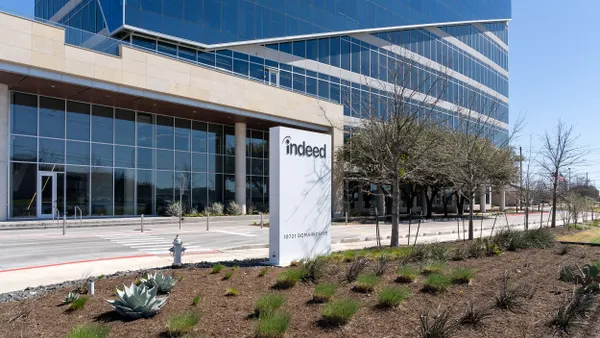Dive Brief:
- HR leaders are struggling to develop solid leadership talent, which may derail an organizer's larger strategies, according to a new report from Gartner, Inc. Based on a survey of 2,800 HR practitioners, Gartner found that a third surveyed struggled with developing future senior leaders and 45% struggled with filling mid-level management positions — situations that Gartner said create "leadership bench instability."
- Only half of surveyed CHROs felt "well-equipped" to lead their organizations into the future, problematic for companies that face a quick-changing business climate. Gartner pointed out a few issues with current succession planning, including that current planning is often based on already-existing roles, which could miss the mark for future needs. The leadership pipeline is often "homogeneous," too, Gartner noted, especially as evidence continues to show that businesses with more diverse workforces rank better in performance.
- Gartner said that the average organization experiences five company-wide changes in three years, and that 73% can expect even more changes in the future. "HR leaders need to ensure that their succession pipeline prepares candidates to execute against current as well as future business needs. Organizations can use scenario planning to identify likely future experiences that executives will need to address as the company evolves," Gartner said.
Dive Insight:
Senior staff vacancies can create gaps in necessary leadership function that organizations can't afford — and the issue may be more widespread than business leaders first assume. A Robert Half survey found that nearly 50% of chief financial officers had not chosen someone to replace them. Their reasons for not having a successor were that they had no plans to leave the company, couldn't find a qualified successor, had other priorities or didn't worry about the transition because they were leaving the company. Because of the disruption a lack of leadership can cause, HR leaders must be prepared in advance for staff changes before they occur.
Planning is especially crucial since sudden CEO departures aren't unusual these days; a number of high-profile CEO departures made headlines in the back half of 2019, many of them due to corporate rule-breaking. Tarah Cook, strategic HR Inc.'s senior HR consultant, told HR Dive in a December interview that well-prepared organizations have employees who are ready to fill a position, or at least know where to find talent in case a vacancy occurs. In fact, succession plans are "more comprehensive than ever," she noted, further putting the onus on HR to be ready for change.
In fact, preparing for C-suite shake-ups is among the top 2020 trends for HR. Challenger, Gray & Christmas noted that January to November 2019 had the highest number of CEO exits since the firm first started tracking the stat in 2002. And while many were planned departures, Andrew Challenger, vice president of the firm, noted that many "were due to Boards and Shareholders holding their CEOs accountable for personal or professional lapses" due in part to broader cultural expectations.
To get started, employers can start thinking about skill sets that translate across multiple departments and allow employees the opportunity to laterally move or work to learn skills that interest them. Not only does it create a more agile workforce, but such a strategy can encourage employees to stick around longer.











